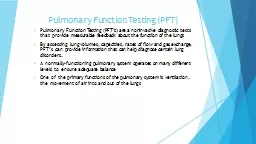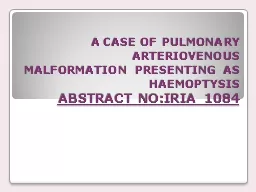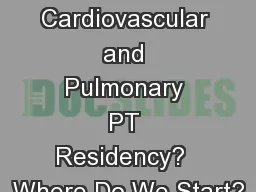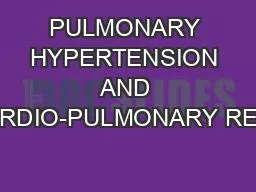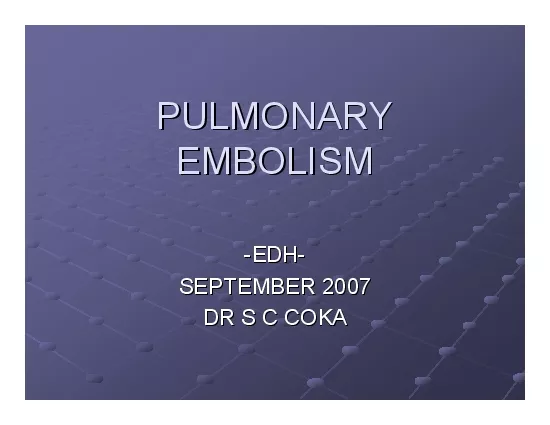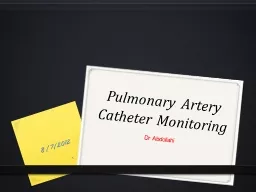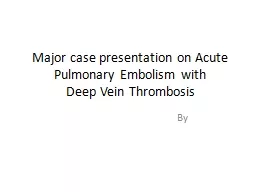PPT-PULMONARY FUNCTION
Author : pasty-toler | Published Date : 2019-12-09
PULMONARY FUNCTION amp RESPIRATORY ANATOMY KAAP310 Respiratory Anatomy Larynx Hyoid bone Thyroid cartilage Lateral cricothyroid ligaments Cricoid cartilage httpapbrwww5apsueduthompsonjAnatomy20amp20Physiology2020202020Exam20ReviewsExam203larynx20figurejpg
Presentation Embed Code
Download Presentation
Download Presentation The PPT/PDF document "PULMONARY FUNCTION" is the property of its rightful owner. Permission is granted to download and print the materials on this website for personal, non-commercial use only, and to display it on your personal computer provided you do not modify the materials and that you retain all copyright notices contained in the materials. By downloading content from our website, you accept the terms of this agreement.
PULMONARY FUNCTION: Transcript
Download Rules Of Document
"PULMONARY FUNCTION"The content belongs to its owner. You may download and print it for personal use, without modification, and keep all copyright notices. By downloading, you agree to these terms.
Related Documents



